Hyundai promises up to 620 km range for large Ioniq 9 electric SUV
Hyundai is expanding its Ioniq model range with the new all-electric SUV Ioniq 9 – the counterpart to the EV9 already launched by Kia. The South Koreans already gave a preview of this vehicle three years ago with the Seven concept car. The new Hyundai model will now be presented to the public at the LA Auto Show starting on Friday, which means that one of the most important target markets has already been named: The Ioniq 9 is due to launch in the US and its home market of South Korea at the beginning of 2025. “Rollout planned for Europe and other markets later,” the carmaker says.
After the Ioniq 5 and 6, the Ioniq 9 is Hyundai’s third volume model based on the company’s E-GMP architecture. The full-size electric SUV houses a 110.3 kWh battery and a 160 kW rear motor. These figures are slightly higher than those of the Kia EV9 (99.8 kWh battery / 150 kW motor), which is also based on the E-GMP. As an all-wheel drive vehicle, the Ioniq 9 has a second motor at the front with an output of 70 or, optionally, 160 kW. In the former case, Hyundai refers to them as ‘long-range RWD’ and ‘Performance AWD’ models.
For the single-engine variant, Hyundai states a range of up to 620 kilometres and a WLTP energy consumption of 19.4 kWh/100 km (EPA-estimated all-electric range of 335 miles and EPA-targeted energy consumption of 97 MPGe). However, these values are not yet official, as homologation is still pending. With this range, however, the electric SUV would be at the forefront of the market. These long-distance qualities have been achieved “thanks to its low drag coefficient, advanced platform and battery technologies,” Hyundai explains.
From 10 to 80 per cent SoC in 24 minutes
The all-wheel drive model with two 160 kW motors on board should accelerate from 0 to 100 kph in 5.2 seconds, the other two variants in 6.7 (long-distance all-wheel drive) and 9.4 seconds (rear-wheel drive). According to the manufacturer, the Ioniq 9 can be charged from 10 to 80 per cent in 24 minutes at a DC fast charger. This is also a provisional value.
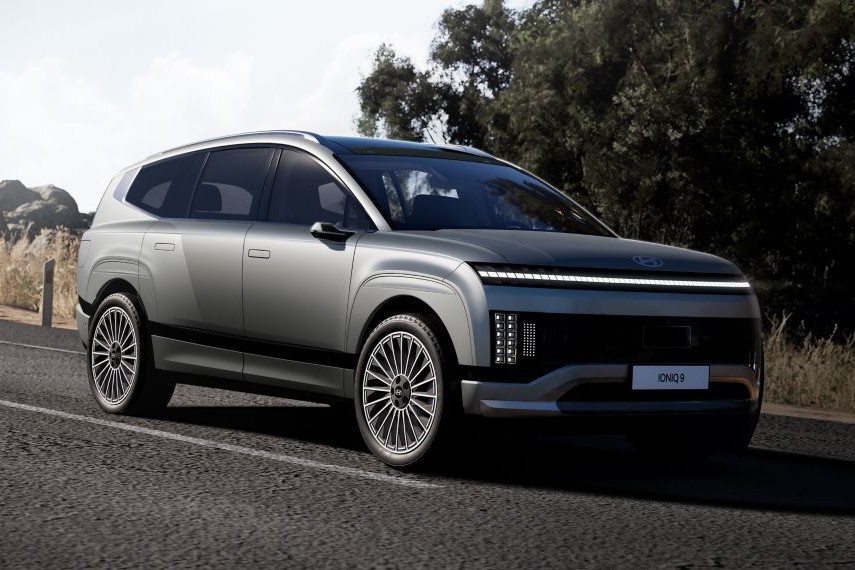
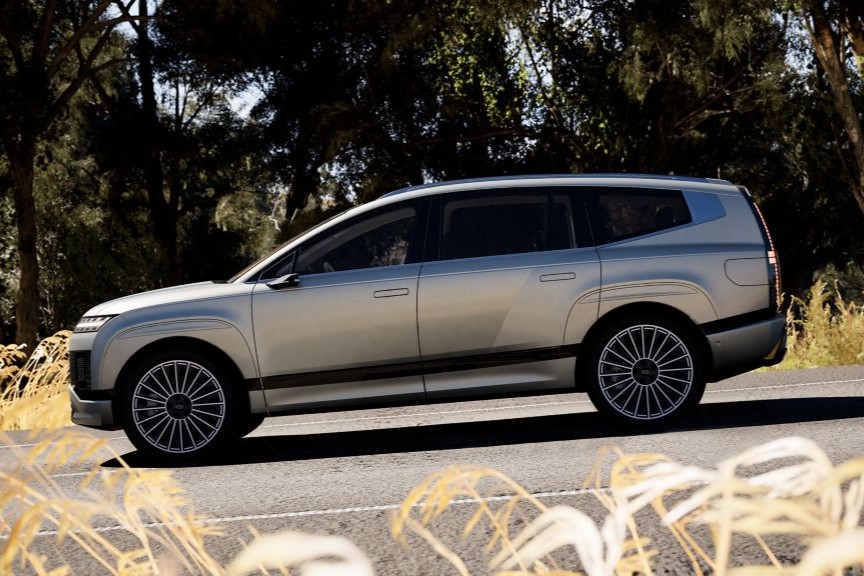
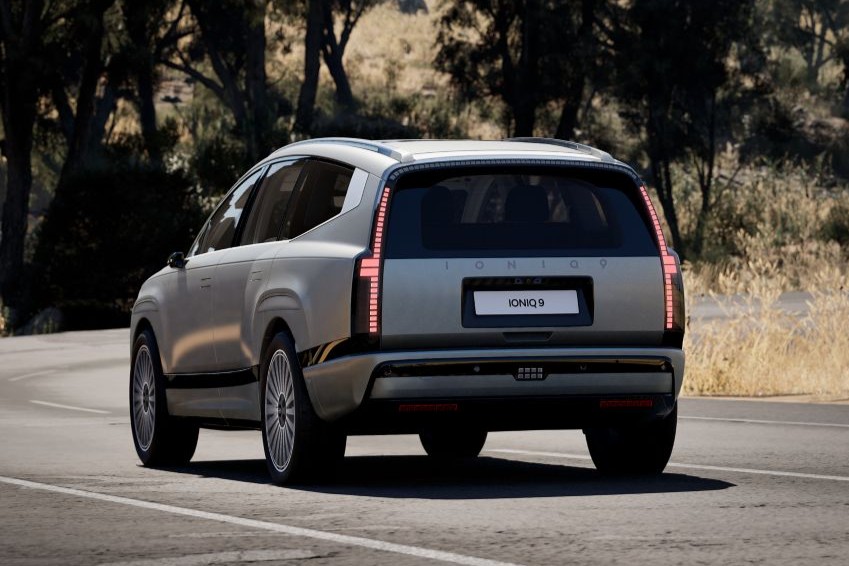
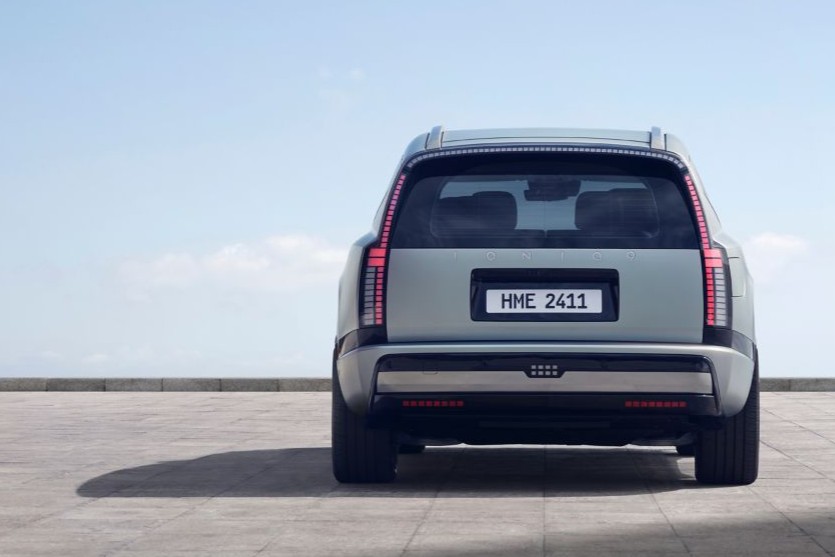
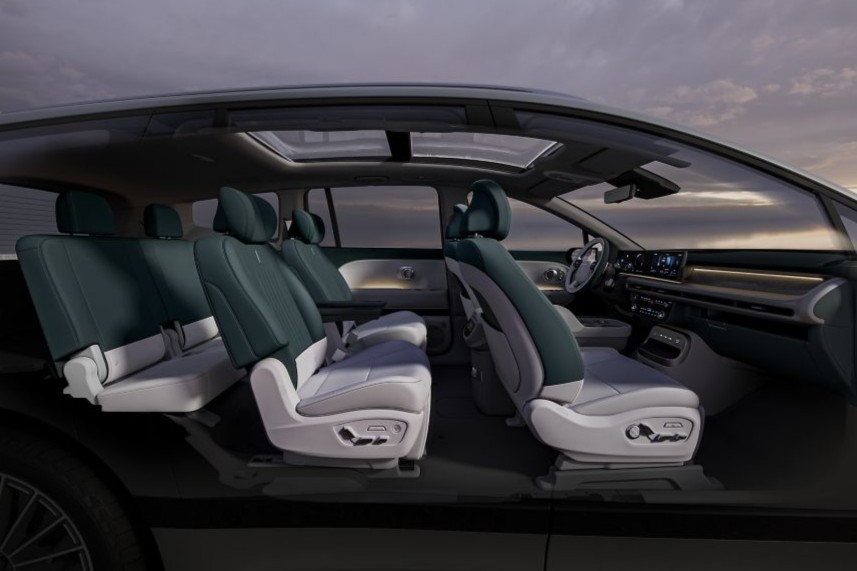
Hyundai has not yet specified the Ioniq 9’s dimensions, except the wheelbase, which is 3.13 metres and thus three centimetres longer than its Kia counterpart, the EV9, which also “only” has a range of 541 kilometres. Hyundai mentions several components as the key, including an improved power electronics system (‘The Ioniq 9 has “an optimised gear ratio for hill climbing and the application of a two-stage inverter for improved efficiency”), a lighter body thanks to the use of aluminium for the wings and side panelling and, of course, the 10 kWh larger battery. The manufacturer does not comment further on the cell type and cell chemistry.
Aerodynamics determine the design
In terms of appearance, the Ioniq 9 is trimmed for aerodynamics. The side silhouette is characterised by an aerodynamically curved roofline. The company puts the drag coefficient at 0.26 – a good value for an SUV that is, by definition, wide and high in the airflow. The South Koreans also describe the “balancing airflow under the body and reduced wheel and tyre resistance” as decisive for aerodynamics. And: “To address these needs, a new dual-motion active air flap (AAF) system has been applied for the first time.” Hyundai’s other aero-optimisation solutions include aerodynamically optimised wheels and antennas embedded in the vehicle.
As a striking design feature, the new model incorporates the pixels typical of the Ioniq, which are integrated into the LED light units and the lower fascia at the front and are also taken up at the rear. In general, the rear slopes down very steeply. The headlights are matrix LED units. As an eye-catcher, the exterior door handles are also indirectly illuminated. There is a choice of 19-, 20- and 21-inch rims as well as optional 21-inch rims in an eye-catching calligraphy design. Further customisation options are available in 16 exterior colours. In addition to monochrome black, the interior colours include six two-tone options.
Inside, the Ioniq 9 aims to score points for spaciousness thanks to its large wheelbase. Hyundai promises 1,899 mm of headroom and two metres of legroom across all rows of seats. The most important interior features include a large panoramic roof, reclining seats in the first and second rows (whereby the seats in the second row can also be rotated) and a centre console with storage space that can be moved by 19 centimetres to which the passengers in the first and second rows of seats have access.
Speaking of storage space: when the third row of seats is folded down, the boot offers space for up to 908 litres. Otherwise, it is 338 litres. In addition, the IONIQ 9 has a frunk that can hold up to 88 litres in the rear-wheel drive version and up to 52 litres in the all-wheel drive version (all figures according to VDA standard).
Panorama display and AI voice recognition
The cockpit of the Ioniq 9 is dominated by an inwardly curved panoramic display flanked by a modern-looking dashboard. The infotainment system comprises a 12-inch instrument cluster and an integrated 12-inch monitor on the aforementioned panoramic display. The seven-seater also comes with an eight-speaker sound system as standard (a premium BOSE system is also available as an option).
In terms of software, the new Ioniq flagship also comes with an improved electric car route planner. The developers have also made further improvements to the torque control display and the vehicle’s energy consumption display. The “Ioniq 9 displays its charge status via green dots on the steering wheel to keep drivers informed of remaining energy.” According to Hyundai, the model also has an AI-supported voice recognition system. The South Koreans are also introducing ‘Features on Demand’ – a function that allows customers to further personalise their vehicle for a fee.
Hyundai emphasises that the SUV plays a key role in the company’s plan to launch 23 new electric models by 2030. According to Jaehoon Chang, President and CEO of Hyundai Motor Company, the Ioniq 9 ” embodies Hyundai Motor’s unwavering commitment and confidence in electrification. Based on Hyundai Motor Group’s acclaimed Electric-Global Modular Platform (E-GMP), Ioniq 9 offers outstanding interior space, providing customers with unique value while solidifying our leadership in the global EV market.”

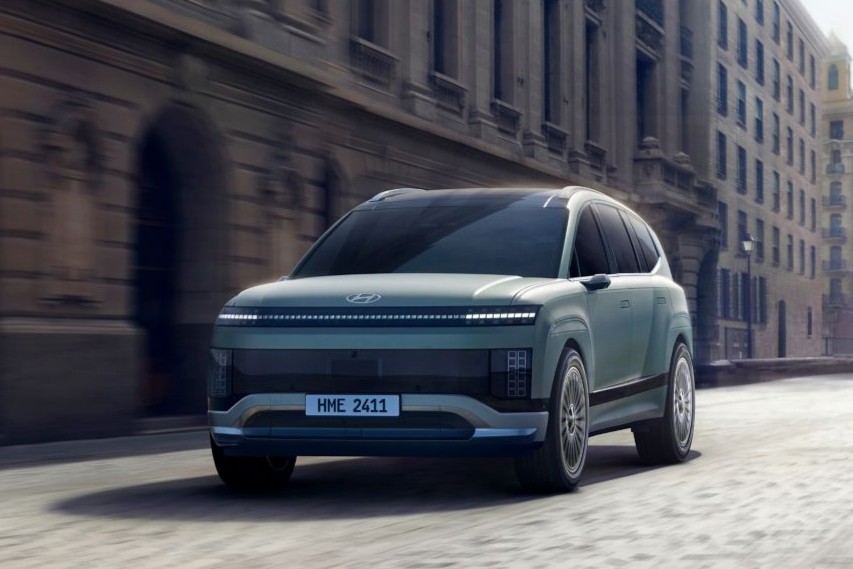



0 Comments